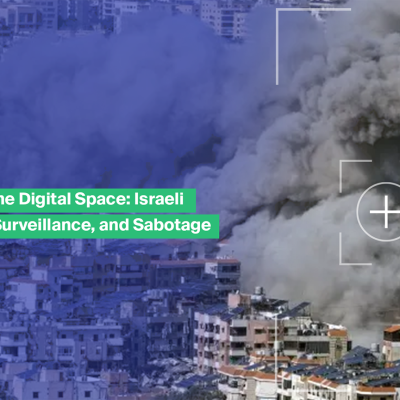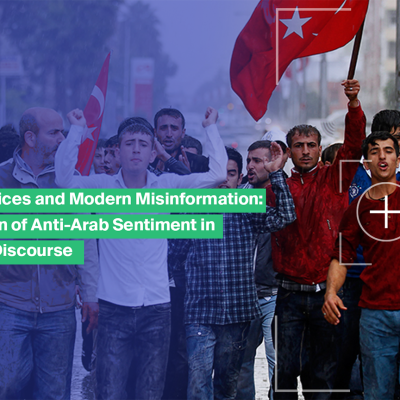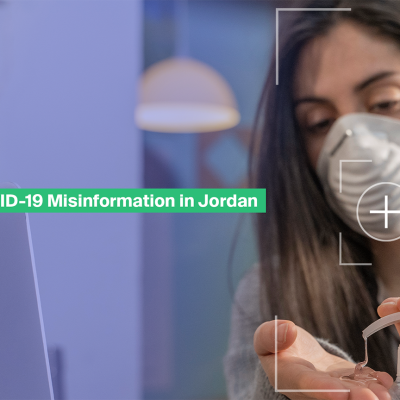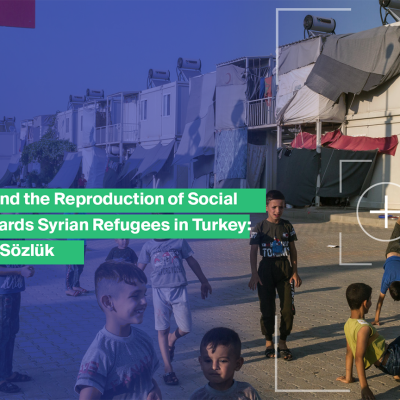Dr. Donia Tarek Abdelwahab Mohamed is an Assistant Professor at Canadian International College, Faculty of Mass Communication – Broadcasting Department. You can reach her at [email protected].
Building Inclusive AI: Guidelines for Gender-Equitable Media Algorithms in the MENA Region
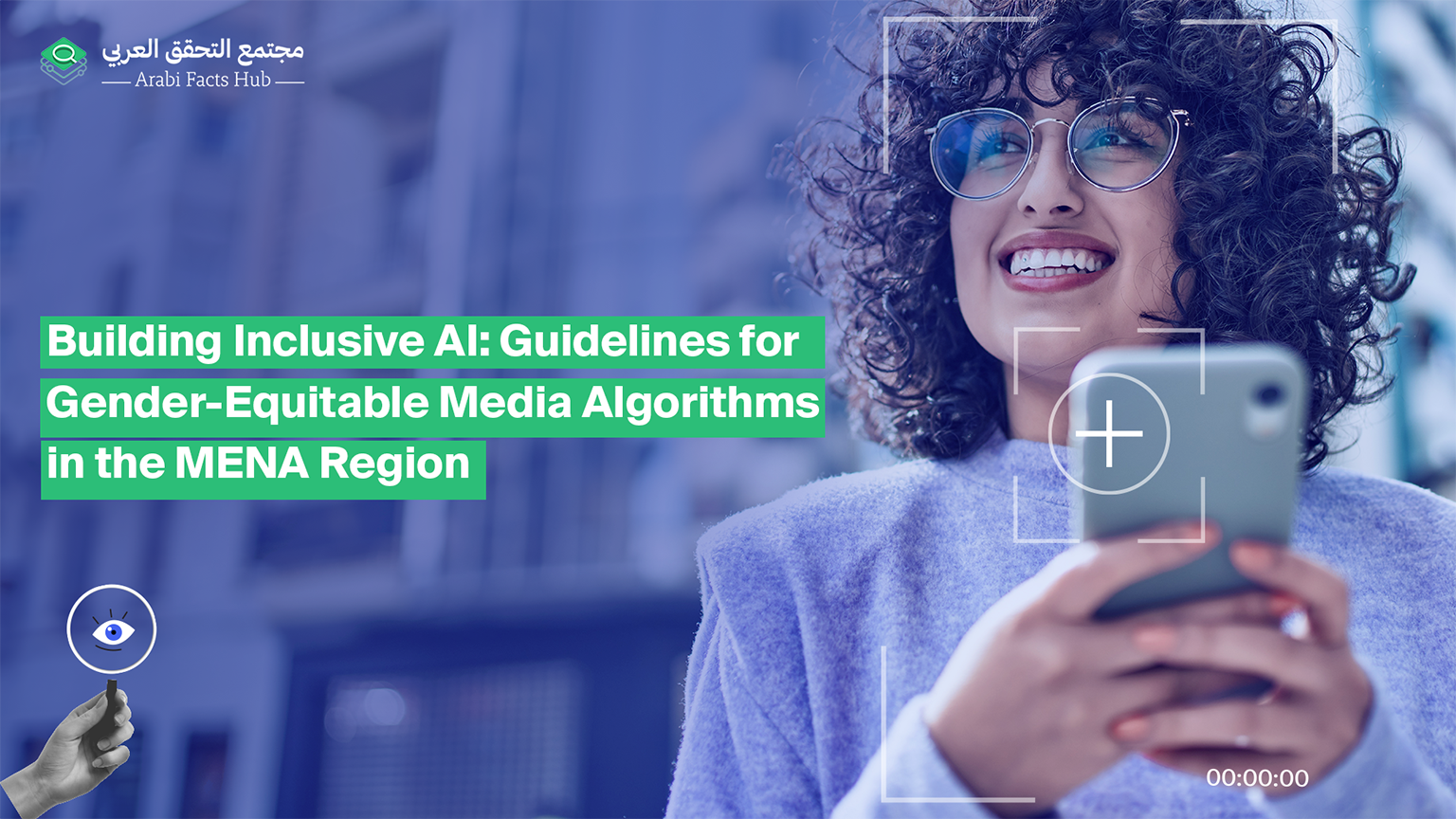
As artificial intelligence (AI) increasingly shapes how media content is created, distributed, and consumed, concerns about inherent biases in AI-driven algorithms are gaining attention, especially with respect to gender equity. In the MENA (Middle East and North Africa) region, these gender biases are particularly pronounced due to intersecting cultural, social, and political dynamics that influence media portrayals of women. This study explores the ethical and technical dimensions of developing gender-sensitive AI algorithms tailored to the MENA media landscape, offering guidelines to address and mitigate gender stereotypes and imbalances perpetuated by algorithmic content curation and recommendation systems.
Focusing on Egypt, Lebanon, and the United Arab Emirates (UAE), this research examines how AI-driven media algorithms can reinforce or challenge gender stereotypes, emphasizing the importance of integrating culturally specific factors. Through in-depth interviews with AI developers, media professionals, and gender studies experts, the study identifies existing biases in algorithmic models and gathers recommendations for creating equitable media portrayals. The findings reveal that gender biases in AI often limit women’s visibility in professional, leadership, and public spheres, while amplifying traditional roles. Recommendations include implementing diverse, regionally relevant datasets, establishing bias-detection mechanisms, and fostering cross-sector partnerships involving technology companies, media organizations, and policymakers.
This study aims to contribute to a more balanced digital media ecosystem that reflects the social complexity and diversity of the MENA region. By advancing gender-sensitive AI practices, the study seeks to empower women, reshape media narratives, and promote equitable media portrayals, ultimately fostering a more inclusive and culturally attuned AI-driven media landscape.
Introduction
In today’s digital era, artificial intelligence (AI) is pivotal in shaping how media content is created, curated, and consumed. Algorithms that power these AI systems have become powerful gatekeepers, influencing the visibility, framing, and prioritization of media content across various platforms. However, despite the widespread use of AI in media, significant challenges persist in terms of gender equity. Many AI-driven algorithms, unintentionally or not, often reflect and amplify existing gender biases. This creates a media landscape where the portrayal and visibility of women are frequently skewed, reinforcing stereotypes and limiting diverse representation. In the MENA (Middle East and North Africa) region, these gendered impacts of AI are particularly pronounced due to complex social dynamics, traditional gender roles, and cultural sensitivities. As media content increasingly influences public opinion and social norms, the biases embedded within AI algorithms can shape how Arab women are perceived, impacting their roles and opportunities in society.
In this context, it becomes imperative to develop AI guidelines that address these gender disparities and consider the cultural and social nuances of the MENA region. This research seeks to establish actionable, gender-sensitive guidelines for AI algorithms tailored to the MENA media landscape, addressing the social responsibility of media platforms to foster balanced and equitable portrayals of women.
The study will focus on three countries—Egypt, Lebanon, and the UAE—each representing distinct media ecosystems and socio-political contexts. Egypt’s diverse media scene, combined with digital activism, offers insights into how biased algorithms can impact grassroots movements and societal perspectives on women’s rights. Lebanon, known for its active media industry and relatively open discourse, provides a rich context to examine AI's role in shaping the representation of women in political and professional arenas. Meanwhile, the UAE, with its significant investment in AI technologies, serves as a model for analyzing the potential of emerging technologies to set benchmarks for gender-equitable AI in media.
Research significance
This research is significant in several critical dimensions. First, it contributes to the emerging discourse on AI ethics and gender equity within media algorithms, a topic that remains under-explored, yet is crucial as AI increasingly shapes public perception and cultural narratives. While much research exists on general algorithmic biases, there is limited focus on how these biases uniquely affect media portrayals of women in the MENA region, where traditional gender norms and rapid digitalization intersect. By focusing specifically on gender equity within AI media algorithms, this research addresses a significant gap, offering culturally contextualized insights into how AI-driven content curation impacts women’s visibility and representation.
Moreover, this study has profound implications for the field of media and communication in the MENA region, where digital media has a substantial influence on societal norms and gender roles. Algorithms that perpetuate gender stereotypes or marginalize women’s voices contribute to social inequalities, reinforcing limited and often stereotypical roles for women. Through its guidelines, this research seeks to provide media platforms with tools to develop gender-equitable AI, which can reshape how women are portrayed and perceived across digital media in the MENA region. By promoting fairer representation, this study advances the broader goals of social equity and gender justice, challenging traditional narratives that constrain women’s roles in public and private life.
The research is also relevant for policymakers, tech developers, and media organizations committed to fostering ethical AI practices. As the UAE and other countries in the MENA region continue to lead in AI adoption, the insights from this research offer a pathway for developing responsible AI frameworks that prioritize gender inclusivity. By proposing collaborative strategies involving tech companies, media institutions, and government bodies, this study holds the potential to influence AI policies and practices on a regional scale, setting a precedent for gender-sensitive media algorithms. Ultimately, this research not only enhances the theoretical understanding of gender biases in AI, but also contributes practical recommendations for building inclusive, equitable digital media environments.
Research objectives and questions
The study will focus on three countries within the MENA region—Egypt, Lebanon, and the UAE. Each represents a unique socio-political and media environment.
It aims to develop a framework for creating gender-sensitive AI guidelines within the MENA media landscape, with a specific focus on promoting balanced portrayals of women. It seeks to achieve this by exploring the unique social, cultural, and technological factors that influence gender representation in media algorithms across Egypt, Lebanon, and the UAE.
Through in-depth interviews with AI developers, media professionals, and gender studies experts, the research will identify specific gender biases in existing AI algorithms and examine their social implications. Additionally, the study aims to provide culturally relevant guidelines for designing inclusive AI models that integrate gender equity into their core functionality. This study aspires to create actionable recommendations that address gender biases in media content, contributing to a more balanced and fair digital media ecosystem for women in the MENA region.Key questions guiding the research include:
- How do AI-driven media algorithms in the MENA region reinforce or challenge gender stereotypes?
- What cultural considerations should be integrated into AI systems to foster a balanced portrayal of women?
- How can policymakers, media organizations, and tech companies collaborate to develop inclusive AI models that reflect the values and diversity of the MENA region?
- What are the practical implications of biased AI algorithms on women's visibility and participation in the media landscape across the MENA region?
Literature review
This literature review examines key research on gender biases in AI, media representation of women, the MENA region's socio-cultural context, and approaches to creating inclusive AI. By exploring these areas, this review provides a comprehensive background for understanding the unique challenges and opportunities for developing gender-equitable media algorithms in the MENA region. This section covers four main areas: (1) gender biases in AI and machine learning; (2) the impact of media representation on gender perceptions; (3) media representation of women in the MENA context; and (4) approaches for creating gender-sensitive, culturally relevant AI.
-
Gender biases in AI and machine learning
Numerous studies have highlighted how biases in AI and machine learning models contribute to the replication and amplification of social biases, particularly those related to gender. Research on facial recognition technologies exposed significant gender and racial biases in AI models, finding that women, especially women of color, were more likely to be misclassified than men. This study underscored how data imbalances during the training phase led to biased outputs, which can perpetuate stereotypes and marginalize certain demographic groups.
A significant body of literature on algorithmic bias further illustrates how gender biases emerge in natural language processing (NLP) models. Studies have shown that NLP algorithms trained on historical text data often inherit and amplify gender stereotypes, for instance, associating women with domestic roles while linking men with professional and leadership roles. These biases result from both the data sources used to train these models and the lack of diversity in AI development teams, which has led to widespread calls for diversified datasets and inclusive model training practices.
Within the context of media, AI algorithms shape content recommendations and influence visibility on platforms like social media, streaming services, and news aggregators. One study reveals how biased search algorithms can disproportionately expose women and minorities to harmful stereotypes. For instance, search results may promote stereotyped or sexualized images of women, reinforcing damaging narratives that shape public perception. This body of research highlights the necessity of implementing bias-detection mechanisms in AI and promoting diversity within AI development teams to mitigate gender biases in media algorithms.
-
The impact of media representation on gender perceptions
The literature on media representation demonstrates that media images and narratives significantly shape societal views on gender roles. Cultivation Theory, originally proposed by Gerbner and Gross in 1976, argues that prolonged media exposure to specific portrayals influences audiences’ perceptions of reality, gradually leading them to accept these portrayals as reflective of real life. Studies applying Cultivation Theory have shown that media representations of women often reinforce narrow, stereotypical roles, such as caregiving, domesticity, and dependence on male authority, which perpetuate traditional gender norms and limit women’s perceived social roles.
In the digital age, algorithms curate content based on user engagement, often amplifying certain narratives while suppressing others. This tendency for "filter bubbles" or "echo chambers" can reinforce stereotypes as users are continuously exposed to similar content. One research paper explores how recommendation algorithms on social media platforms can contribute to stereotype reinforcement by repeatedly suggesting content that aligns with users' historical preferences. Consequently, audiences become more likely to encounter gender-stereotyped portrayals, with limited exposure to diverse, progressive representations. These findings emphasize the importance of inclusive AI models that balance content recommendations and avoid restricting portrayals of women to traditionally assigned roles.
-
Media representation of women in the MENA context
The representation of women in media within the MENA region is a complex and evolving issue, heavily influenced by cultural norms, religious values, and socio-political dynamics. Studies on MENA media portrayals of women highlight that while some media outlets are progressively showcasing women’s contributions in various fields, traditional roles remain prevalent in mainstream media. Studies argue that portrayals of women in the MENA region are often shaped by patriarchal narratives, which prioritize women’s familial roles over professional and individual identities. Such portrayals limit the societal perception of women’s capabilities, often positioning them predominantly within domestic or supportive roles.
A report by the United Nations Development Programme (UNDP) in 2019 indicates that media in the MENA region still widely adheres to traditional gender portrayals, with women frequently depicted in contexts related to family, beauty, and caregiving, and less often in leadership or professional roles. Moreover, research shows that when women do appear in more progressive roles, they are often framed as exceptions, which can reinforce the notion that professional achievements are unusual or secondary to women’s primary roles in the home. This discrepancy in media portrayal limits public acceptance of women’s full participation in the workforce and leadership.
In recent years, digital platforms have offered alternative spaces where Arab women can share diverse narratives that challenge traditional stereotypes. A study finds that social media has empowered women across the Arab world to represent themselves outside conventional frameworks, highlighting their roles as activists, entrepreneurs, and professionals. However, AI-driven recommendation systems that favor popular or highly engaging content can still marginalize these narratives, prioritizing content that aligns with prevailing societal norms. This situation underscores the need for algorithms that are sensitive to regional values yet aim to promote more balanced, realistic portrayals of Arab women.
-
Approaches for creating gender-sensitive, culturally relevant AI
Developing gender-sensitive and culturally relevant AI requires a multifaceted approach that incorporates inclusive datasets, bias-mitigation techniques, and diverse representation within development teams. Studies emphasize the importance of “data representativeness,” suggesting that algorithms trained on balanced, diverse datasets are less likely to reproduce harmful stereotypes. Inclusive AI models in media, they argue, should incorporate a variety of gender representations, which helps avoid the reinforcement of singular or biased portrayals. This literature points to the importance of integrating local and regional data sources to ensure that AI algorithms resonate with the cultural context of their audiences, a practice particularly relevant in the MENA region where diverse identities and values coexist.
Additionally, ongoing research into bias-detection and mitigation techniques highlights methods for identifying and correcting gender biases in AI models. Techniques such as adversarial de-biasing and fairness-aware learning algorithms are being explored to reduce gender stereotyping in NLP and image-recognition tasks. These methods focus on identifying discriminatory patterns in AI outputs and adjusting the algorithms to promote more equitable representations. Implementing these techniques in media algorithms could help reduce the gender biases that shape content visibility and media portrayal of women.
The literature also emphasizes the importance of involving a diverse range of stakeholders—policymakers, developers, media practitioners, and gender experts—in the AI development process. A study suggests that such collaboration ensures that AI systems are designed with sensitivity to ethical concerns and cultural values. This is especially relevant in the MENA region, where traditional values and modern aspirations often intersect in complex ways. Cross-sector partnerships can enable the integration of diverse perspectives, creating AI models that respect cultural nuances while advancing gender equity.
Summary of key insights
The literature suggests several important takeaways for this study:
- Existing research indicates that biases in AI models can perpetuate gender stereotypes, highlighting the need for inclusive datasets and diverse development teams.
- Studies show that media representations shape public perceptions of gender, often reinforcing traditional roles. Algorithms, which curate content based on engagement, can further amplify these portrayals if not properly designed.
- The media landscape in the MENA region is shaped by traditional gender roles, with limited portrayals of women in diverse or progressive roles. Digital platforms provide alternative spaces for representation, but AI algorithms can still marginalize these narratives if they are based solely on popularity metrics.
- Inclusive AI requires regionally relevant data, bias-mitigation techniques, and cross-sector collaboration to ensure that algorithms promote balanced, fair portrayals that reflect the diversity of women’s roles and contributions.
Theoretical frameworks
Intersectionality Theory, originating from Black feminist scholarship, particularly the work of Kimberlé Crenshaw, emphasizes the interconnectedness of social identities, such as gender, race, class, and ethnicity, and how these intersections contribute to unique experiences of privilege or oppression. This theory posits that gender biases cannot be fully understood in isolation from other social factors, as overlapping identities influence the way individuals experience media representations and societal roles.
Application in the MENA context
In the MENA region, where gender intersects with factors like religion, class, ethnicity, and nationality, Intersectionality Theory is especially relevant. For example, portrayals of Arab women often vary widely based on socio-economic status, religious affiliation, or urban versus rural backgrounds, with each portrayal carrying different stereotypes and expectations. Algorithms that overlook these intersections may simplify or misrepresent Arab women, potentially reinforcing narrow or harmful stereotypes. Applying Intersectionality Theory encourages a closer examination of how AI algorithms might differently impact women across these intersecting identities, leading to a more nuanced, inclusive approach to algorithmic design.
Implications for gender-sensitive AI design
Incorporating Intersectionality Theory into AI design for media could guide developers to consider a broader range of identity markers in their datasets, promoting more balanced and multidimensional portrayals. This could involve using data that highlights diverse experiences of women across different socio-economic, cultural, and geographical backgrounds, ultimately reducing one-dimensional representations and supporting more complex, realistic portrayals.
Methodology
This study employed a qualitative research methodology, centered on in-depth interviews with a purposive sample of media professionals, AI developers, and gender studies experts from Egypt, Lebanon, and the UAE. A qualitative approach was essential for capturing the complex and nuanced perspectives of these stakeholders, allowing for a deeper understanding of how algorithmic biases manifest in media platforms and impact gender representation. By focusing on qualitative data, the study aims to gather rich, detailed insights into the lived experiences, observations, and expert analyses of participants, providing a comprehensive picture of the gendered dimensions of AI algorithms within media.
Sampling and Participant Selection: Participants were selected using purposive sampling to ensure they possess relevant expertise in AI, digital media, or gender studies within the context of the MENA region. The sample consists of 30 participants, with 10 individuals interviewed from each country (Egypt, Lebanon, and the UAE). These participants include AI engineers who develop algorithms for media platforms, digital media experts who oversee content curation and distribution, and gender studies scholars or advocates focused on representation and gender equity. This diverse sample captures a range of perspectives on how AI-driven content curation affects women’s visibility and the reinforcement or dismantling of gender stereotypes in digital media.
Interview Process: Each interview lasted between 60 to 90 minutes and was conducted through either in-person meetings or virtual platforms, depending on participants’ preferences and geographic constraints. The interview guide included a mix of open-ended questions designed to elicit detailed insights into participants’ experiences and perspectives.
Questions focused on several core areas:
- Understanding of Algorithmic Biases: Participants were asked to discuss their experiences with gender biases in AI algorithms used in media, including specific examples of how these biases affect content visibility and representation of women.
- Cultural and Social Considerations: The interviews explored the unique cultural factors in Egypt, Lebanon, and the UAE that may contribute to or mitigate gender biases within AI algorithms. This includes examining how local cultural norms and societal expectations shape gender representation and how algorithms might reinforce or challenge these norms.
- Perceptions of AI’s Role in Media Representation: Participants discussed how they perceive the impact of AI-driven media on public perceptions of women and the potential for AI to either perpetuate or counter gender stereotypes.
- Recommendations for Gender-Equitable AI: The interviews concluded with discussions on solutions and recommendations, where participants shared ideas on developing gender-sensitive AI models and provided suggestions for collaborative efforts involving media organizations, tech developers, and policymakers.
Data Collection and Analysis: All interviews were audio-recorded, transcribed, and coded for analysis. A thematic analysis approach was used to identify recurring patterns, key themes, and insights across the interviews. The coding process was guided by the study’s research objectives, with particular attention to themes related to gender-specific algorithmic biases, cultural considerations, and practical recommendations for mitigating biases in AI-driven media. By identifying these themes, the analysis will highlight the ways in which algorithmic biases impact women’s representation and the broader socio-economic implications of these biases on women’s participation in digital media spaces.
Country-Specific Focus: To account for the unique media environments and cultural dynamics of each country, findings from Egypt, Lebanon, and the UAE were analyzed both collectively and individually. This comparative approach will enable the study to draw country-specific insights while identifying regional patterns and shared challenges. For instance, Egypt’s more activist-oriented media landscape, Lebanon’s progressive media industry, and the UAE’s advanced AI infrastructure may reveal distinct influences on the ways gender biases manifest in media algorithms. This layered analysis will allow for a more contextualized understanding of the factors that contribute to or mitigate algorithmic gender biases in each country.
Ethical Considerations: Given the sensitive nature of the topic, the study prioritized ethical guidelines throughout the research process. Informed consent was obtained from all participants, ensuring they understood the purpose of the study and their right to confidentiality. Pseudonyms or generic titles were used in reporting findings to protect participants’ identities. Additionally, the study was conducted in accordance with ethical standards for research on AI and gender equity, ensuring that data handling and analysis maintain participants' confidentiality and address any potential biases.
Limitations: As a qualitative study with a limited sample from three MENA countries, this research may not fully capture the diversity of gender and cultural dynamics across the entire region. Moreover, insights from experts may not completely represent the experiences of the general public or reflect women’s perspectives directly. Nonetheless, by drawing on specialized knowledge from diverse participants, the study aims to provide foundational insights and actionable recommendations for building gender-sensitive AI frameworks in media.
This research methodology ensures a robust exploration of the gendered impact of AI in media within the MENA region, grounded in expert perspectives and tailored to the cultural nuances of Egypt, Lebanon, and the UAE. The findings will provide a basis for understanding how AI-driven algorithms shape gender representation in digital media and inform practical strategies for creating inclusive AI models that promote balanced, fair portrayals of women.
Results and analysis of the in-depth interviews
The findings from the in-depth interviews with media professionals, AI developers, and gender studies experts across Egypt, Lebanon, and the UAE reveal insights into the nuanced ways AI-driven media algorithms impact gender representation. Analyzed in alignment with the study’s research questions, the results underscore the critical role of culturally sensitive, gender-equitable AI in shaping fair media portrayals in the MENA region.
Question 1: How do AI-driven media algorithms in the MENA region reinforce or challenge gender stereotypes?
Interviewees highlighted that AI algorithms often reinforce existing gender stereotypes due to biases within data sets and cultural norms embedded in content recommendations. In Egypt, experts observed that AI-based content recommendations often reflect and amplify traditional gender roles, frequently depicting women in family-oriented or caregiving roles. According to AI developers, this is partly because historical data used to train AI models is laden with stereotypical representations, which leads to the frequent prioritization of similar content. Media experts in Lebanon noted that algorithms tend to give more visibility to male public figures or women in traditionally “feminine” roles, reinforcing narrow views of women’s social and professional capabilities. In the UAE, some developers attributed this to a lack of diversity in the development process, with algorithms trained primarily on content that does not include balanced gender perspectives.
On the positive side, several participants acknowledged that AI algorithms could be designed to counter stereotypes by intentionally diversifying the content recommended to audiences. AI experts in Lebanon and the UAE indicated that introducing diversity in data inputs and applying bias-detection mechanisms in the model training process could significantly reduce stereotype reinforcement. In Lebanon, media professionals suggested that curating content that showcases women in leadership, politics, and entrepreneurship could reshape public perceptions. While this requires intentional modifications to AI systems, it also emphasizes the need for regionally relevant data that highlights progressive, balanced portrayals of women.
Question 2: What cultural considerations should be integrated into AI systems to foster a balanced portrayal of women?
The experts emphasized the need for contextualizing cultural norms and gender sensitivity in AI systems, meaning they must be culturally sensitive, especially given the traditional gender norms prevalent across the MENA region. Many interviewees pointed out that algorithms designed without cultural considerations may unintentionally propagate conservative narratives, which can marginalize women and uphold traditional gender expectations. Egyptian participants particularly highlighted the need for algorithms that reflect the region’s cultural values while promoting modern, inclusive perspectives on women’s roles. In Lebanon, gender advocates stressed that AI-driven content in the media should avoid overemphasizing culturally sensitive stereotypes, such as portraying women solely in domestic roles or reinforcing passive portrayals of women in political contexts.
Another recurring theme was the importance of local, culturally relevant data integration in the development of AI algorithms for the region. Developers in the UAE suggested that global AI models often fail to account for the MENA region’s social and cultural diversity, leading to homogenized portrayals that lack resonance with local audiences. Participants recommended the integration of local data sources and culturally aligned content, such as narratives of Arab women’s achievements in business, politics, and social activism, which could help foster a more balanced portrayal of women in the media. Media experts also suggested the inclusion of local Arabic dialects and culturally nuanced phrases in AI models to better align content with regional realities.
Through the application of culturally relevant data sets, bias-detection mechanisms, and diverse representation in AI training data, media algorithms can shift away from reinforcing stereotypes to fostering a more inclusive digital landscape.
Question 3: How can policymakers, media organizations, and tech companies collaborate to develop inclusive AI models that reflect the values and diversity of the MENA region?
Interviewees across all three countries emphasized the necessity of cross-sector collaboration among policymakers, media organizations, and tech companies to establish AI standards that promote gender equity. In Egypt, media professionals proposed that partnerships with government bodies could foster accountability measures, such as regulations ensuring that media algorithms undergo regular evaluations for gender bias. Lebanese participants highlighted the potential role of NGOs in bridging gaps between tech developers and gender experts, advocating for inclusivity in algorithmic development and media portrayals. Participants from the UAE suggested establishing a regional body dedicated to overseeing the ethical use of AI in media, which could facilitate knowledge-sharing and best practices for gender-equitable AI across the MENA region.
Such cross-sector partnerships are crucial for ensuring the accountability and transparency of AI applications in media, enabling stakeholders to monitor, evaluate, and refine AI systems to meet gender-equity goals. By working collectively, these entities can create a robust framework for AI that prioritizes fair representation and mitigates biases, thus empowering women and fostering social equity within the digital realm.
Many experts also advocated for educational initiatives that raise public awareness about gender biases in media algorithms. For example, Lebanese gender studies advocates recommended collaboration with media outlets to educate audiences on recognizing and questioning biased representations in digital media. In the UAE, AI developers discussed the potential impact of public education campaigns that promote critical engagement with AI-driven media content. Such initiatives could involve influencers and digital educators who encourage audiences to approach algorithm-driven recommendations critically, fostering a culture of media literacy that reinforces inclusive portrayals of women.
Participants agreed that transparency and accountability are essential for building trust in AI systems and reducing bias. AI developers across the three countries emphasized the need for mechanisms that allow users and third-party auditors to assess and report on the inclusivity of AI-driven media platforms. Egyptian media experts suggested that media organizations could establish clear guidelines for AI usage in content curation, along with reporting structures for algorithmic decision-making that prioritize gender inclusivity. Lebanese participants advocated for transparency in data usage and model design to help audiences and stakeholders understand how gendered narratives are shaped by algorithms.
Question 4: What are the practical implications of biased AI algorithms on women's visibility and participation in the media landscape across the MENA region?
The interviews further revealed the practical impacts of biased AI algorithms on women’s visibility and participation in the media landscape across the MENA region:
Social Impacts: Gendered algorithms often limit women’s visibility, affecting their representation in leadership roles, professional achievements, and public influence. Egyptian gender advocates noted that algorithms limiting women’s representation can shape societal views on gender roles, hindering progress in gender equality initiatives.
Economic Impacts: Participants from the UAE highlighted how biased AI algorithms can impact women’s economic opportunities by reducing visibility for women in business and entrepreneurship. The limited promotion of female professionals across platforms was noted to potentially influence hiring practices and entrepreneurial support for women, particularly in male-dominated fields.
Political Participation: In Lebanon, gender studies experts pointed out that biased algorithms often underrepresent women’s political activism and public engagement, reinforcing stereotypes that women are less active in civic matters. This limitation is particularly impactful in Lebanon’s politically active society, where media algorithms play a significant role in public opinion formation.
Implementing gender-equitable AI models is not merely a technical undertaking; it involves ethical considerations that acknowledge the deeply rooted cultural narratives within this region. AI-driven media content has the power to either challenge or perpetuate gendered expectations. This study highlights that with intentional design, AI can promote diverse and accurate representations of women, broadening public perceptions of their roles in society, leadership, and the workforce.
Recommendations for actionable AI practices
Drawing from these insights, the interviewees provided recommendations for developing gender-sensitive AI models within MENA’s media landscape:
- Diversify Data Sets: Ensure algorithms are trained on diverse data sets that represent a variety of women’s experiences, professional roles, and social contributions.
- Implement Bias-Detection Mechanisms: Integrate automated tools to regularly detect and mitigate biases in AI algorithms.
- Cultural Customization: Design algorithms that respect and reflect MENA-specific gender norms while challenging stereotypes and promoting inclusive representations.
- Transparency and User Controls: Develop user-friendly transparency tools that allow audiences to understand and influence how algorithms prioritize content.
In summary, the interviews underscore the importance of culturally attuned, cross-sector efforts to build gender-sensitive AI models in the MENA region. These findings reveal a pressing need for regionally tailored, equitable AI practices to foster inclusive, fair, and representative media portrayals of women.
Conclusion
This study emphasizes the critical role that AI plays in shaping media representation, public opinion, and cultural norms, particularly concerning gender equity in the MENA region. By exploring the perspectives of media professionals, AI developers, and gender studies experts across Egypt, Lebanon, and the UAE, the research provides a nuanced understanding of how AI-driven algorithms, if left unchecked, can reinforce stereotypes, restrict women’s visibility, and ultimately impact their socio-economic opportunities. The findings underscore the importance of culturally sensitive, gender-equitable AI models that align with the diverse social values and gender dynamics unique to the MENA region done through a collaborative approach, involving policymakers, media organizations, and tech companies in the creation and governance of gender-sensitive AI systems.
The potential impact of gender-sensitive AI in media extends beyond fair representation; it holds the capacity to reshape societal norms and enhance women’s participation across various fields. By promoting inclusive AI practices, the MENA region can support a future where women are portrayed as active, diverse contributors to society, thereby inspiring broader shifts toward gender equality. Such AI-driven media reforms can serve as a model for other regions facing similar challenges, demonstrating that technology, when guided by ethical and cultural considerations, can be a powerful tool for social transformation.
This study lays the groundwork for advancing gender-sensitive AI practices in the MENA media landscape, with implications that reach far beyond the region. By addressing both the technical intricacies and ethical dimensions of AI, the research contributes to a vision of media that empowers women, challenges restrictive stereotypes, and reflects the cultural diversity of the MENA region. There must be ongoing efforts to refine AI models, foster collaborative frameworks, and prioritize transparency in the development of inclusive media algorithms — an endeavor essential to achieving a balanced, fair, and resilient digital ecosystem for women.
